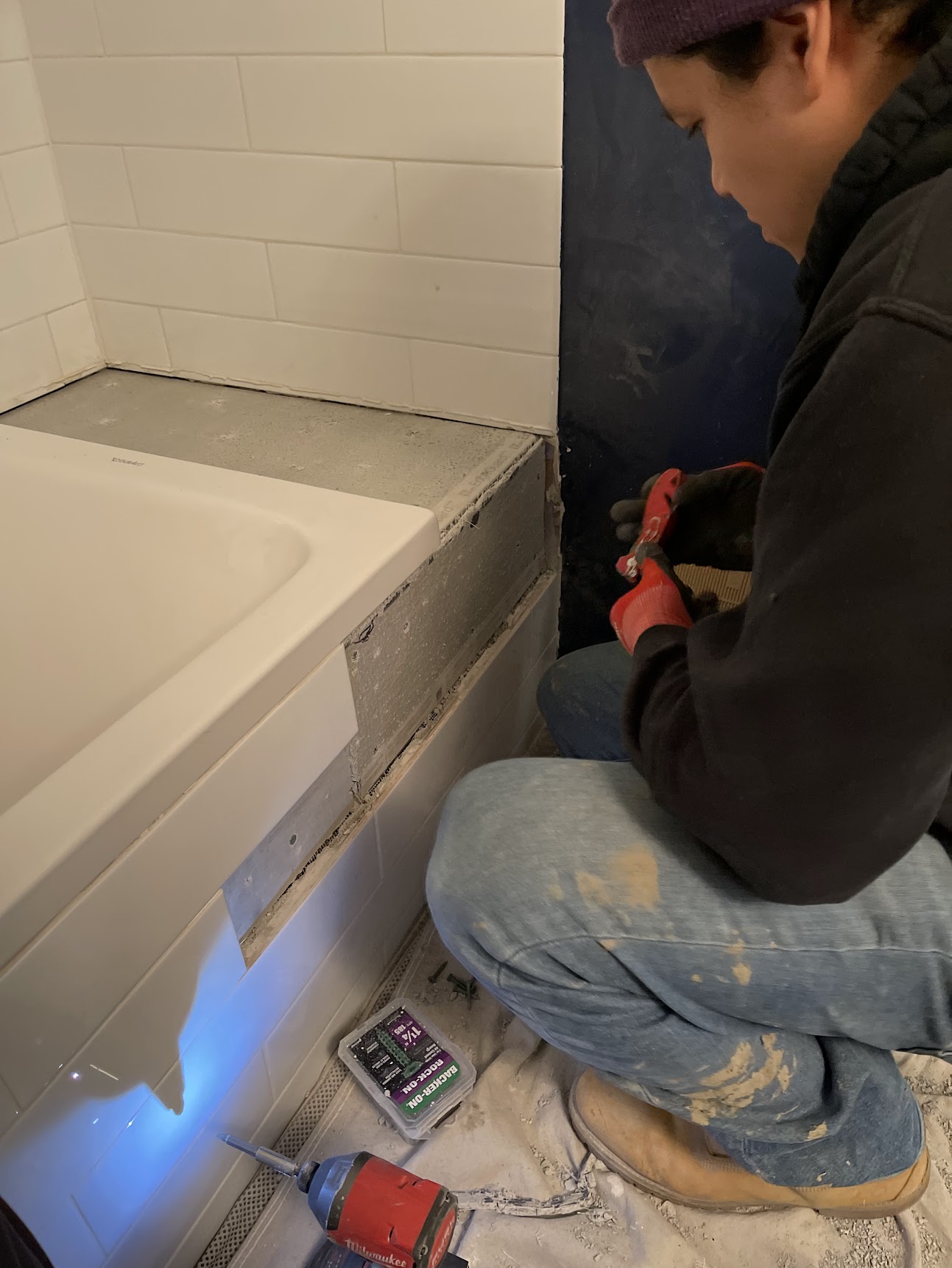Hanging drywall is a key step in many home improvement projects. But how many screws do you need for each sheet? It’s a common question that can puzzle both DIY enthusiasts and pros alike. Whether youre handling drywall installation or drywall repair, Chicago handyman has some great tips here.
Number of Screws per sheet of Drywall
Drywall on Walls
28*
Drywall on Ceilings
32*
*1/2 inch drywall
The drywall installation code specifies screw spacing is based on 3 factors:
1. Location (wall or ceiling)
2. Direction (parallel or perpendicular to studs)
3. Thickness (1/4, 3/8, 1/2, 5/8)
The most common drywall sold in America is 1/2 inch 4×8 foot sheet. Installed on a ceiling needs minimum 32 screws, while on a wall the minimum is 28 screws.
The exact number can change based on where the sheet is going and how thick it is.

Proper screw placement is just as important as the number of screws used. Screws should be spaced 16 inches apart on walls and 12 inches apart on ceilings. Edges need screws every 8 inches to keep things secure. Getting this right helps prevent sagging and cracking, making for a smoother finish that lasts longer.
Drywall Screw Spacing for Walls and Ceilings
Check out this simple table for drywall screw spacing for walls and ceilings. You cant over do it, but you can certainly under do it. Be sure to use these guidelines on screw spacing when installing drywall.
| Drywall Thickness | Walls (inches) | Ceilings (inches) |
| 1/4″ | 16″ | 12″ |
| 3/8″ | 16″ | 12″ |
| 1/2″ | 16″ | 12″ |
| 5/8″ | 6-12″ | 6-12″ |
The numbers above is for screw spacing for drywall installation without adhesive. However, these numbers can also be used when applying adhesive between framing and drywall.
Choosing the Right Fasteners
Screws are best for most drywall jobs. They hold better than nails and are easier to remove if needed.
Pick the right screw length:
- 1 1/4 inch for 1/2 inch drywall
- 1 5/8 inch for 5/8 inch drywall
Use coarse-thread screws for wood studs and fine-thread for metal. Make sure screw heads are slightly below the surface without breaking the paper.
For extra strength, some pros use glue with screws. This can cut down on the number of screws needed.
Detailed Drywall Screw Spacing Guidelines
Proper drywall screw spacing is key for strong, long-lasting drywall installation. The right spacing and number of screws keep walls and ceilings secure while avoiding issues like drywall repair for screw pops or sagging.

Drywall Screw Spacing Rules
On walls, space screws 16 inches apart in the field and 8 inches along edges.
For ceilings, use 12-inch spacing in the field and 7-8 inches on edges. Keep screws about 3/8 inch from panel edges to prevent crumbling.
Near doors and windows, add extra screws for added strength. Use a consistent pattern to make sure the drywall is well-supported all over.
The International Residential Code (IRC) sets these rules. They help stop problems like loose drywall or visible screw heads later on.
Calculating Screws Per Drywall Sheet
For a standard 4×8 foot sheet of 1/2-inch drywall, you’ll need about 32 screws. This follows the “4 screws per square yard” rule. Thicker 5/8-inch drywall needs more – around 40 screws per sheet.
Here’s a quick guide:
- 4×8 foot sheet (1/2 inch): 32 screws
- 4×8 foot sheet (5/8 inch): 40 screws
- 4×12 foot sheet (1/2 inch): 48 screws
Adjust these numbers based on room features like windows or built-ins. It’s better to use a few extra screws than too few.
Avoiding Common Errors
Don’t overdrive screws. This can break the paper surface and weaken the hold. Set screw heads just below the surface.
Avoid “screw pops” by not putting screws too close to panel edges or joints. These can push through later and ruin the wall’s look.
Don’t skip screws to save time. This can lead to loose or wavy walls. Stick to the spacing rules for best results.
Use the right screw length. For 1/2-inch drywall, 1 1/4 inch screws work well. For 5/8-inch sheets, go with 1 5/8 inch screws.
Lastly, don’t rely on adhesives alone. While they help, screws are still needed for a secure install that meets building codes.








